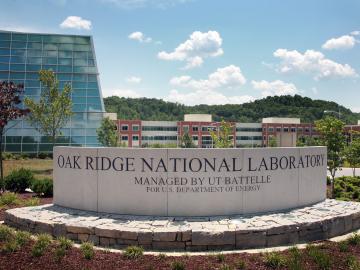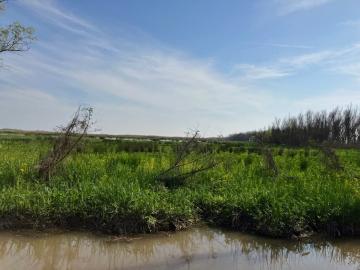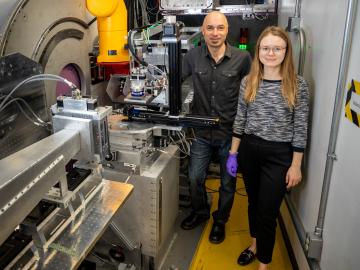
Filter News
Area of Research
- Biology and Environment (39)
- Computational Biology (1)
- Computational Engineering (2)
- Computer Science (2)
- Electricity and Smart Grid (1)
- Energy Science (41)
- Functional Materials for Energy (1)
- Isotopes (10)
- Materials (20)
- Materials for Computing (3)
- Mathematics (1)
- National Security (4)
- Neutron Science (11)
- Nuclear Science and Technology (4)
- Supercomputing (31)
News Type
News Topics
- (-) Biomedical (32)
- (-) Clean Water (16)
- (-) Environment (99)
- (-) Exascale Computing (24)
- (-) Isotopes (29)
- 3-D Printing/Advanced Manufacturing (93)
- Advanced Reactors (27)
- Artificial Intelligence (62)
- Big Data (34)
- Bioenergy (46)
- Biology (51)
- Biotechnology (16)
- Buildings (43)
- Chemical Sciences (57)
- Composites (25)
- Computer Science (121)
- Coronavirus (28)
- Critical Materials (23)
- Cybersecurity (21)
- Education (3)
- Element Discovery (1)
- Emergency (2)
- Energy Storage (80)
- Fossil Energy (2)
- Frontier (25)
- Fusion (28)
- Grid (43)
- High-Performance Computing (58)
- Hydropower (6)
- Irradiation (3)
- ITER (6)
- Machine Learning (31)
- Materials (107)
- Materials Science (94)
- Mathematics (3)
- Mercury (5)
- Microelectronics (1)
- Microscopy (31)
- Molten Salt (8)
- Nanotechnology (44)
- National Security (26)
- Neutron Science (88)
- Nuclear Energy (55)
- Partnerships (36)
- Physics (31)
- Polymers (24)
- Quantum Computing (21)
- Quantum Science (47)
- Security (13)
- Simulation (24)
- Software (1)
- Space Exploration (13)
- Statistics (2)
- Summit (32)
- Transportation (73)
Media Contacts

Scientists at ORNL completed a study of how well vegetation survived extreme heat events in both urban and rural communities across the country in recent years. The analysis informs pathways for climate mitigation, including ways to reduce the effect of urban heat islands.

Groundwater withdrawals are expected to peak in about one-third of the world’s basins by 2050, potentially triggering significant trade and agriculture shifts, a new analysis finds.
The United States could triple its current bioeconomy by producing more than 1 billion tons per year of plant-based biomass for renewable fuels, while meeting projected demands for food, feed, fiber, conventional forest products and exports, according to the DOE’s latest Billion-Ton Report led by ORNL.

Two different teams that included Oak Ridge National Laboratory employees were honored Feb. 20 with Secretary’s Honor Achievement Awards from the Department of Energy. This is DOE's highest form of employee recognition.

ORNL climate modeling expertise contributed to a project that assessed global emissions of ammonia from croplands now and in a warmer future, while also identifying solutions tuned to local growing conditions.

Scientists at the Department of Energy’s Oak Ridge National Laboratory are using a new modeling framework in conjunction with data collected from marshes in the Mississippi Delta to improve predictions of climate-warming methane and nitrous oxide.

Corning uses neutron scattering to study the stability of different types of glass. Recently, researchers for the company have found that understanding the stability of the rings of atoms in glass materials can help predict the performance of glass products.

ORNL Environmental Sciences Division Director Eric Pierce presented the division’s 2023 Distinguished Achievement Awards at the organization’s December all-hands meeting.

Scientists from Stanford University and the Department of Energy’s Oak Ridge National Laboratory are turning air into fertilizer without leaving a carbon footprint. Their discovery could deliver a much-needed solution to help meet worldwide carbon-neutral goals by 2050.

Researchers used the world’s first exascale supercomputer to run one of the largest simulations of an alloy ever and achieve near-quantum accuracy.


